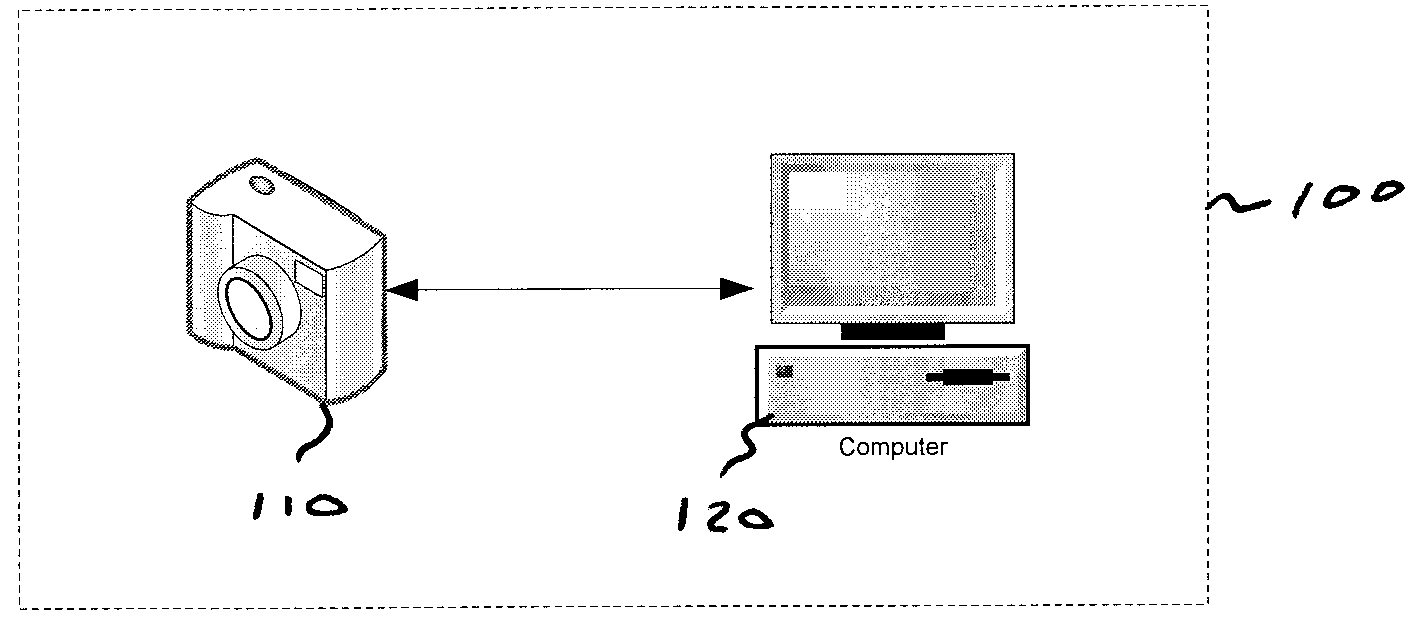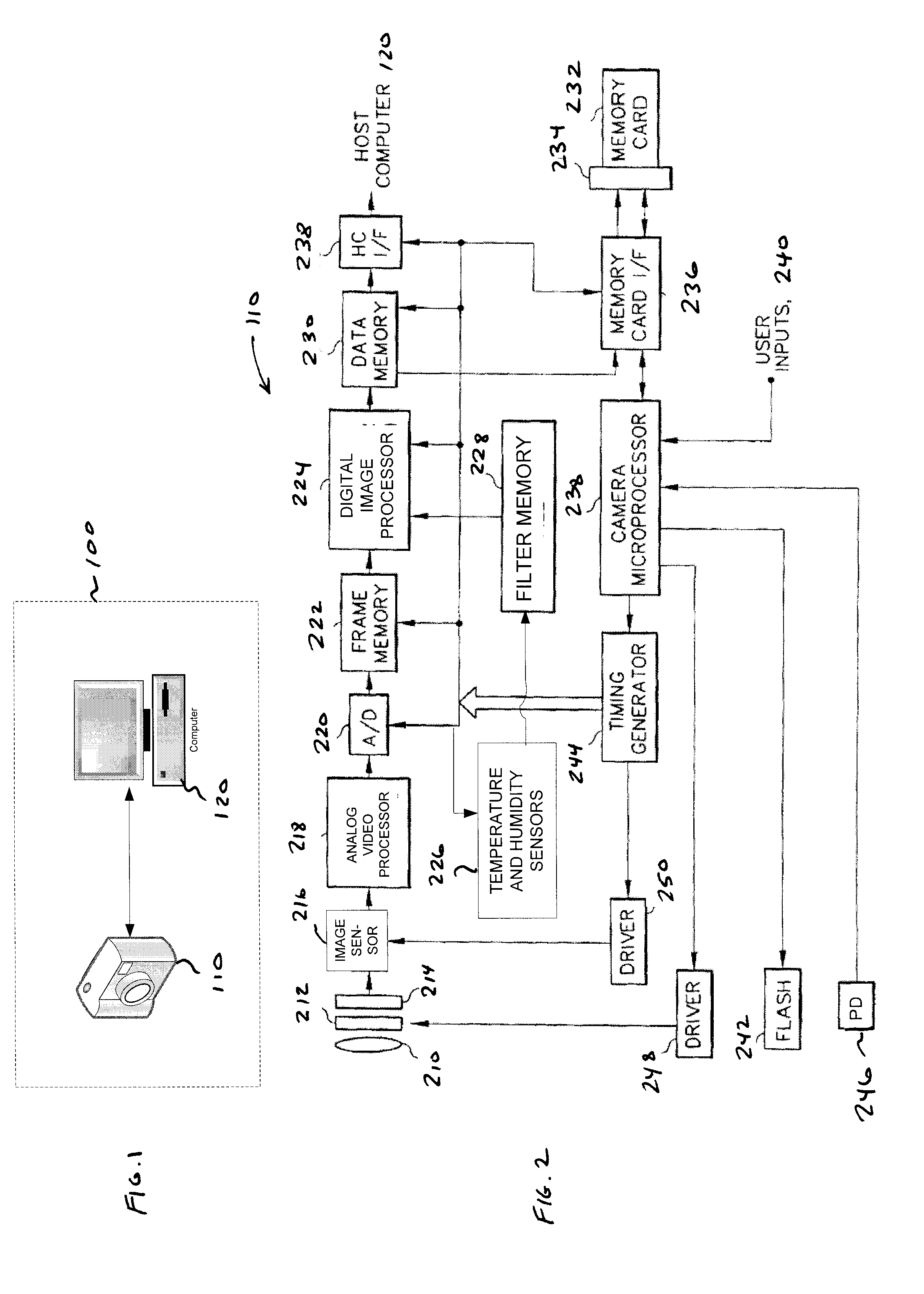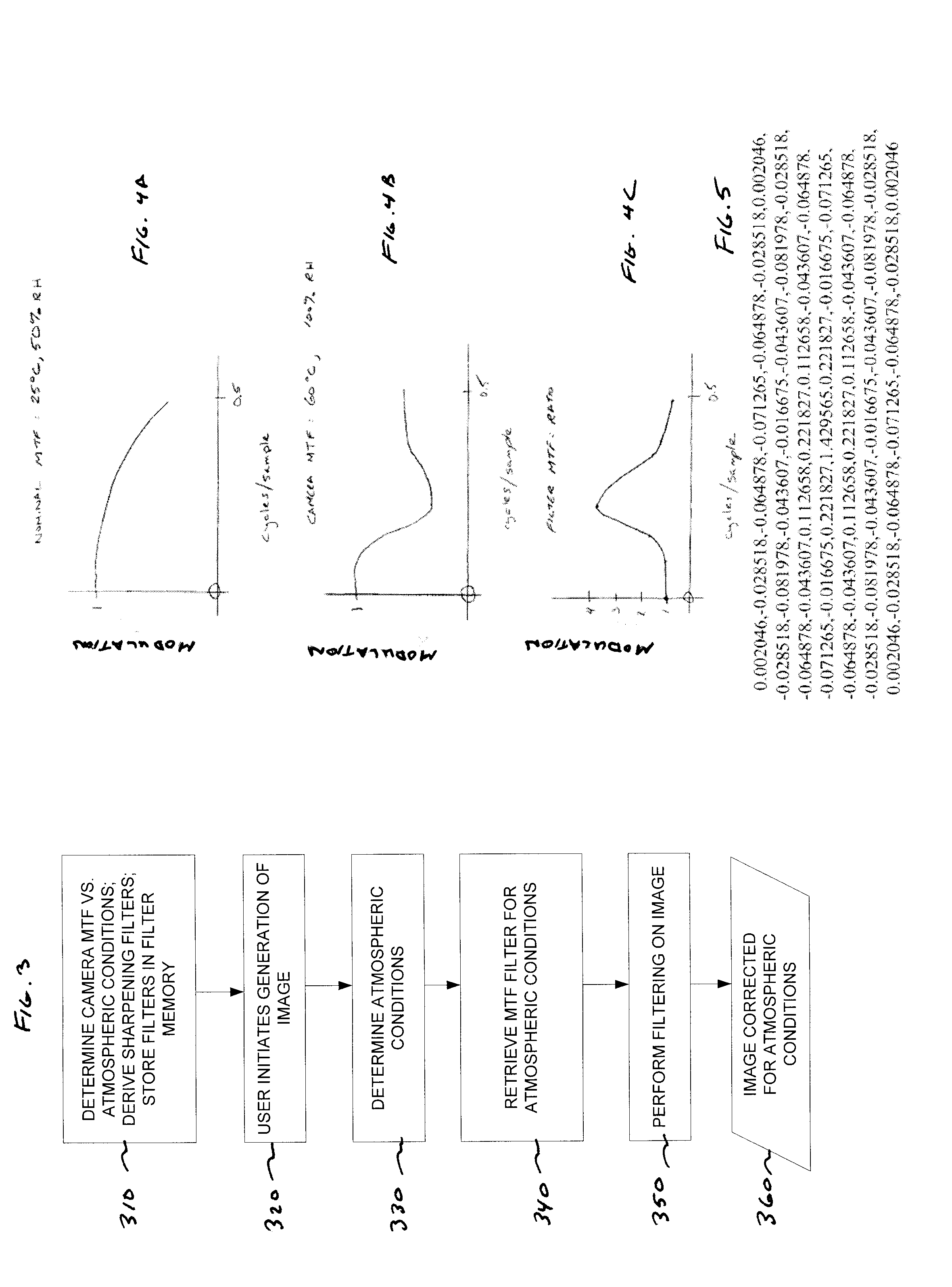Condition dependent sharpening in an imaging device
a technology of imaging device and condition, applied in the field of digital imaging device, can solve the problems of affecting the performance of imaging device, plastic optical components may not be able to hold focus in as large temperature and humidity range, and often physical large solutions, and achieve the effect of reducing blur in images
- Summary
- Abstract
- Description
- Claims
- Application Information
AI Technical Summary
Benefits of technology
Problems solved by technology
Method used
Image
Examples
Embodiment Construction
[0016]The present invention will be described with reference to illustrative embodiments. It is anticipated that numerous modifications can be made to these embodiments and the results will still come within the scope of the invention. No limitations with respect to the specific embodiments described herein are intended or should be inferred.
[0017]FIG. 1 shows a block diagram of an illustrative digital imaging system 100 in which aspects of the present invention may be implemented. This particular digital imaging system includes a digital camera 110 and a computer 120. Nevertheless, several other configurations are contemplated and would come within the scope of the invention. Rather than the digital camera, the imaging system could, for example, include a film camera with an optical scanner operative to convert images developed on film into digital data. Alternatively, the imaging system could include a video camera instead of still camera. The digital camera may be combined with a...
PUM
 Login to View More
Login to View More Abstract
Description
Claims
Application Information
 Login to View More
Login to View More - R&D
- Intellectual Property
- Life Sciences
- Materials
- Tech Scout
- Unparalleled Data Quality
- Higher Quality Content
- 60% Fewer Hallucinations
Browse by: Latest US Patents, China's latest patents, Technical Efficacy Thesaurus, Application Domain, Technology Topic, Popular Technical Reports.
© 2025 PatSnap. All rights reserved.Legal|Privacy policy|Modern Slavery Act Transparency Statement|Sitemap|About US| Contact US: help@patsnap.com



